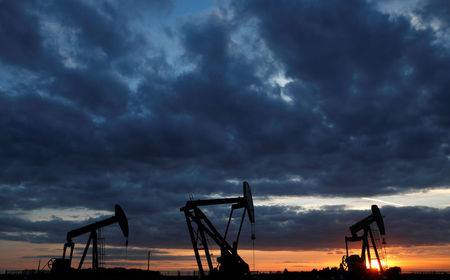Commodities
Oil prices slip slightly lower; Iran in focus after helicopter crash

Investing.com– Oil prices slipped lower Monday, handing back early gains after the confirmation of the death of Iran’s President in a helicopter crash.
At 08:30 ET (12:30 GMT), fell 0.5% to $83.53 a barrel, while dropped 0.6% to $79.10 a barrel.
Iran stability in focus after helicopter crash
Crude prices rose early Monday following reports that a helicopter carrying Iranian President Ebrahim Raisi and his foreign minister crashed in mountainous terrain due to bad weather conditions over the weekend.
Raisi was seen as a contender to become Iran’s next supreme leader – the highest political position in the oil-producing nation.
His death was later confirmed by state media, but tensions have eased with the Iranians not accusing any outside bodies of foul play.
Additionally, the county’s oil policy should not be affected given current Supreme Leader Ayatollah Ali Khamenei holds ultimate power with a final say on all state matters.
Fears that continued instability in the Middle East could disrupt oil supplies from the region have been a key point of support for oil prices, keeping trading comfortably above $80 for most of 2024.
Fears that continued instability in the Middle East could disrupt oil supplies from the region have been a key point of support for oil prices.
Rate uncertainty, OPEC anticipation keeps caution in play
That said, there remains a great deal of caution with the oil markets ahead of a slew of upcoming cues on U.S. interest rates and the economy this week.
The of the Federal Reserve’s late-April meeting are due this week, as are speeches from a string of Fed officials.
Markets were also on edge before a meeting of the Organization of Petroleum Exporting Countries and allies (OPEC+), which is scheduled for June 1. Any updates on the cartel’s plans to maintain ongoing production cuts will be squarely in focus.
“We might have to wait for further clarity from OPEC+ and its output policy for the second half of the year to provide any impetus to the market and for it to break out of its recent range,” said analysts at ING, in a note.
(Ambar Warrick contributed to this article.)
Commodities
Oil prices rise; U.S. crude inventories plunge, Russia-Ukraine truce eyed
Commodities
India’s Reliance to stop buying Venezuelan oil over US tariffs, sources say
Commodities
Oil prices climb on Venezuela supply worries

 Forex3 years ago
Forex3 years agoForex Today: the dollar is gaining strength amid gloomy sentiment at the start of the Fed’s week

 Forex3 years ago
Forex3 years agoUnbiased review of Pocket Option broker

 Forex3 years ago
Forex3 years agoDollar to pound sterling exchange rate today: Pound plummeted to its lowest since 1985

 Forex3 years ago
Forex3 years agoHow is the Australian dollar doing today?

 Cryptocurrency3 years ago
Cryptocurrency3 years agoWhat happened in the crypto market – current events today

 World3 years ago
World3 years agoWhy are modern video games an art form?

 Commodities3 years ago
Commodities3 years agoCopper continues to fall in price on expectations of lower demand in China

 Economy3 years ago
Economy3 years agoCrude oil tankers double in price due to EU anti-Russian sanctions























